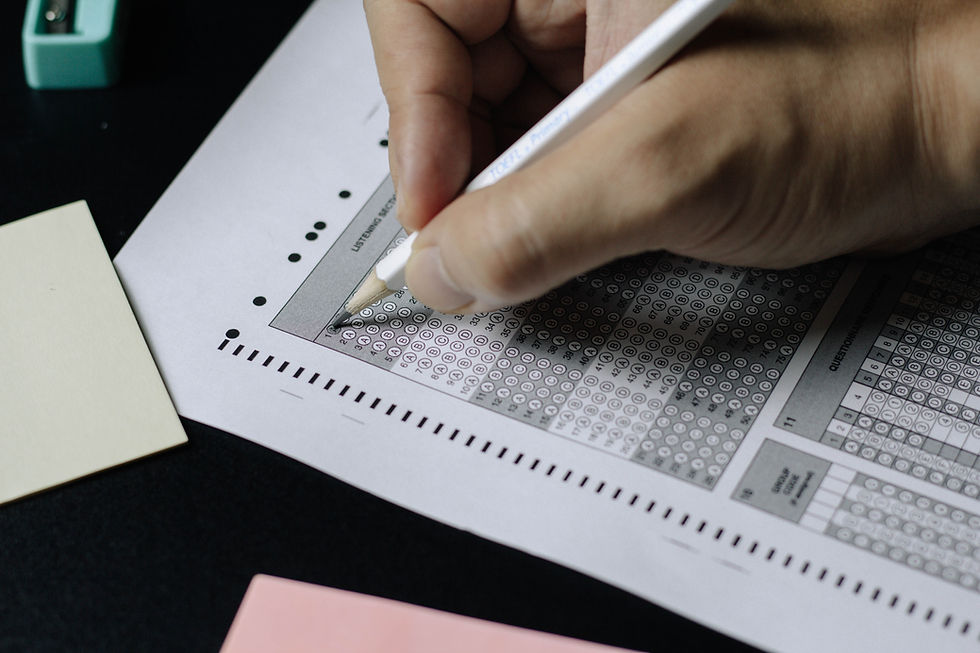Innovative Student Assessment Techniques: Enhancing Learning Through Feedback
- Kseniia Begma

- Jan 20
- 3 min read

As educators, assessing student learning is not just about assigning grades—it's about fostering understanding, critical thinking, and personal growth. Using a variety of assessment techniques can help teachers gain deeper insights into their students' progress while engaging students in meaningful self-reflection.
Drawing inspiration from proven classroom assessment techniques (CATS), here are innovative strategies to assess students effectively across various learning domains.
1. Assessing Prior Knowledge and Understanding
Before diving into new topics, it's essential to gauge what students already know and uncover misconceptions. Techniques like these are particularly effective:
Background Knowledge Probe: Use short questionnaires at the beginning of a course or unit to assess students' foundational knowledge. This helps identify starting points for instruction.
Focused Listing: Ask students to list ideas or terms they associate with a specific topic to evaluate their recall and focus.
Minute Paper: At the end of a lesson, have students answer two questions: "What was the most important thing you learned today?" and "What question remains unanswered?"
By using these methods, teachers can adapt their instruction to address gaps and build on existing knowledge.
2. Encouraging Analysis and Critical Thinking
Assessment isn't just about recall; it's about helping students break down information and solve problems. Here are a few techniques to foster analysis:
Pro and Con Grid: To develop analytical skills, have students list the pros and cons of a concept, decision, or argument.
Defining Features Matrix: Ask students to categorize concepts based on defining features to reinforce critical thinking.
Analytic Memos: Assign students to write a brief analysis of a problem or topic, providing recommendations for decision-makers.
These activities engage students in deeper cognitive processes, promoting a thorough understanding of content.
3. Building Synthesis and Creativity
Encourage students to synthesize their learning into original, creative outputs. Techniques like these emphasize integration:
One-Sentence Summary: Challenge students to summarize an entire topic by answering "Who does what to whom, when, where, how, and why?"
Concept Mapping: Ask students to connect key ideas and concepts in a diagram visually.
Invented Dialogues: Have students create conversations between historical figures or characters, weaving in their knowledge of events and context.
Such assessments push students to connect the dots, deepening their mastery of the material.
4. Fostering Problem-Solving Skills
Problem-solving assessments help students apply their learning in practical ways. Here are a few examples:
What's the Principle?: Ask students to identify the principles required to solve different problems.
Documented Problem Solutions: Have students track and explain the steps to solve a problem, providing insight into their thought processes.
Human Tableau or Class Modeling: Engage students in physically modeling or enacting a process to demonstrate their understanding.
By integrating these approaches, teachers can assess what students know and how they apply it.
5. Supporting Application and Performance
Students need opportunities to apply their learning to real-world scenarios. Effective techniques include:
Directed Paraphrasing: Ask students to paraphrase complex concepts for a specific audience, like a younger learner or a client.
Application Cards: Encourage students to generate examples of how a concept applies in real-world contexts.
Paper or Project Prospectus: Have students create a brief plan for a project, demonstrating their ability to organize and apply their knowledge.
These methods make learning more relevant and impactful by bridging the gap between theory and practice.
6. Developing Self-Awareness and Values
Assessments can also help students reflect on their learning habits and personal growth:
Goal Ranking and Matching: Have students list and prioritize their personal learning goals and connect them to course objectives.
Everyday Ethical Dilemmas: Use case studies to explore students' attitudes and values related to ethical challenges in their field.
Double-Entry Journals: Encourage students to respond to significant text passages with personal reflections.
These activities promote deeper engagement and a stronger connection to the material.
7. Gathering Feedback for Teaching Improvement
Assessment isn't just for students—it's for teachers, too. Gathering feedback on teaching methods and materials can enhance instructional quality:
Classroom Opinion Polls: Collect anonymous feedback on students' perceptions of the course.
Assignment Assessments: Ask students to reflect on the value of assignments for their learning.
RSQC2 (Recall, Summarize, Question, Connect, and Comment): Use this structured feedback method to evaluate the impact of previous lessons.
By actively seeking input, educators can fine-tune their teaching and foster a more responsive learning environment.
Final Thoughts
Practical assessment isn't one-size-fits-all. By incorporating diverse techniques, educators can create a richer, more engaging learning experience that benefits both students and teachers. These methods measure understanding and encourage growth, creativity, and critical thinking.
Ready to Transform Your School Into a Thriving Community?
Don't let your school blend into the crowd. With a clear strategy and expert guidance, you can create an inclusive, standout school community that excels academically and earns recognition. Let's chat today to start building a legacy of excellence.




Comments